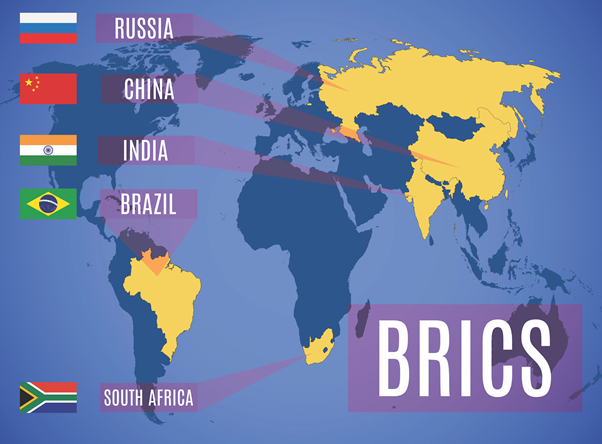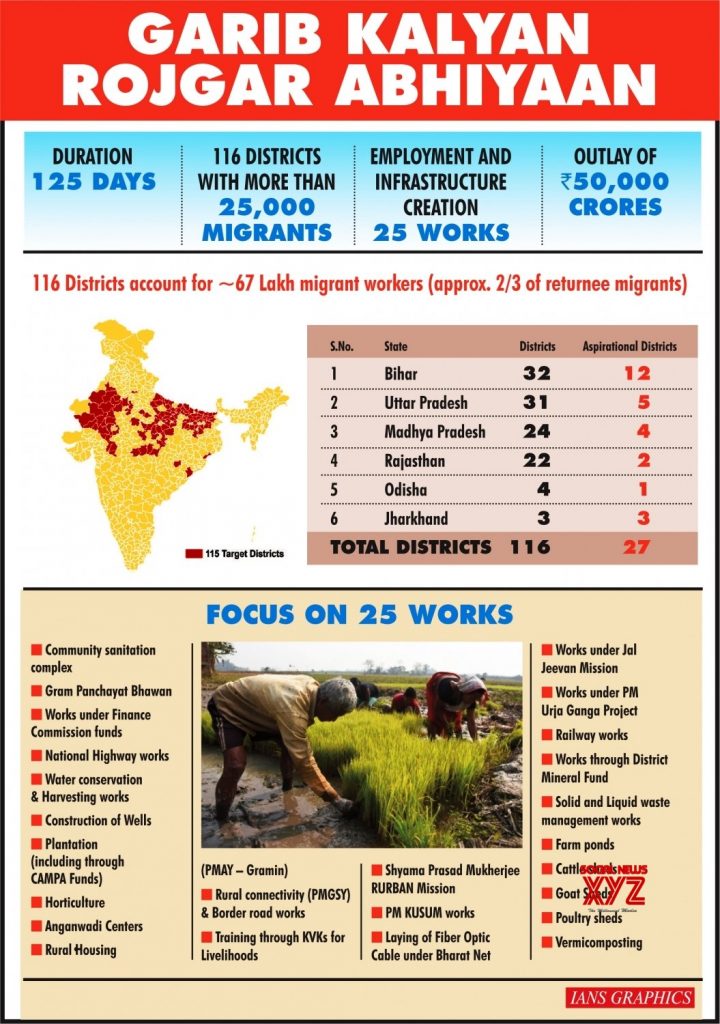Contents
- Highlights of the PM’s Address on Independence Day
- 4th Meeting of the BRICS Anti-Drug Working Group
- Fly Ash Utilization: NTPC develops infrastructure
- Indian Railways generates work under GKRA
HIGHLIGHTS OF THE PM’S ADDRESS ON INDEPENDENCE DAY
Focus: GS-II Social Justice, Governance
Why in news?
The Prime Minister Shri Narendra Modi addressed the Nation from the ramparts of the Red Fort on the 74th Independence Day.
Highlights of the Speech
- The National Digital Health Mission, under which every Indian will be given a health ID, will bring a new revolution in India’s health sector.
- National Infrastructure pipeline project worth Rs 110 lakh crore will boost our overall infrastructure projects, and we will now focus on multi-model connectivity infrastructure.
- Gharib Kalyan Rojgar Abhiyan has also been started to provide employment to poor in their villages.
- To provide modern infrastructure to the farmers of the country ‘Agriculture Infrastructure Fund’ of Rs 1 lakh crore has been created.
- As of August 2020, under Jal Jeevan Mission, every day more than one lakh houses are getting water connection.
- In the last five years, 1.5 lakh gram panchayats in the country have been connected with optical fibre.
- Of the 40 crore Jan Dhan accounts opened in the country, about 22 crore accounts are of women and about 30,000 crores of rupees have been directly transferred to the accounts of women in the three months of the pandemic Lockdown.
Optical Fibre Cable (OFC) for villages
- The Prime Minister Promised that in the coming 1000 days, every village in the country (~6 lakh villages) will be connected with optical fibre cable.
- Participation of rural India and villages in Digital India is very important for balanced development of India.
- It was also announced that in the next 1000 days, Lakshadweep will be connected with submarine optical fibre cable, going ahead from the recent Submarine Optic Fibre connectivity established to the Andaman and Nicobar Islands.
- The advantages of the promised project lie in the people getting cheaper & better connectivity and all the benefits of Digital India, especially in improving online education, tele-medicine, banking system, online trading, boosting tourism and skill development etc.
Health and Hygiene of Women in the country
- The Government has made available health related products at an affordable price – in that more than 5 crore Sanitary Napkins have been distributed to underprivileged women from 6000 Jan Aushdhi Kendras at the minimum price of Rs.1 each.
- This step ensured ‘Swachhta, Swasthya and Suvidha’ for the underprivileged Women of India.
- This step has been taken by the Union Department of Pharmaceuticals to ensure the achievement of the goal of affordable and quality healthcare for all.
4TH MEETING OF THE BRICS ANTI-DRUG WORKING GROUP
Focus: GS-II International Relations
Why in news?
The 4th Session of the BRICS Anti-Drug Working Group comprising of Brazil, Russia, China, South Africa and India was held, with the Indian delegation led by the Director General, Narcotics Control Bureau.
Details
- Fruitful exchange of opinions concerning the drug situation in the BRICS states, the international and regional trends of illegal trafficking in narcotic drugs, psychotropic substances and their precursors, as well as the impact of various internal and external factors on the situation took place during the summit.
- The common points emerged during the discussions include need for real time information sharing among the member states and need to curb increased drug trafficking through maritime routes.
- Misuse of darknet and other advanced technologies for drug trafficking was one of the key focal areas of the meeting.
Recently in news: Anti-Drug Action Plan for 2020-21
Recently, Nasha Mukt Bharat: Annual Action Plan (2020-21) for 272 Most Affected Districts was e-launched by Minister of State for Social Justice and Empowerment on the occasion of International Day Against Drug Abuse and Illicit Trafficking (26th June).
Anti-Drug Action Plan (Nasha Mukt Bharat Annual Action Plan for 2020-21)
Nasha Mukt Bharat Annual Action Plan for 2020-21 would focus on 272 most affected districts (list in Annexure) and launch a three-pronged attack combining efforts of
1. Narcotics Bureau,
2. Outreach/Awareness by Social Justice
3. Treatment through the Health Dept.
The Action Plan has the following components:
1. Awareness generation programmes;
2. Focus on Higher Educational institutions,
3. University Campuses and Schools;
4. Community outreach and identification of dependent population;
5. Focus on Treatment facilities in Hospital settings;
6. Capacity Building Programmes for Service Provider.
Aims of Nasha Mukt Bharat:
- Reach out to about 4 Lakh Children and Youth for awareness about ill-effects of drug use.
- Increase community participation and public cooperation
- Supporting Government Hospitals for opening up De- addiction Center in addition to existing Ministry Supported De-addiction Centers (IRCAs)
- Conducting Training programme for about 10000 participants
Ministry of Social Justice and Empowerment is the nodal Ministry for drug demand reduction which coordinates and monitors all aspects of drug abuse prevention which include assessment of the extent of the problem, preventive action, treatment and rehabilitation of addicts, dissemination of information and public awareness.
What is BRICS?
BRICS is the international grouping of Brazil, Russia, India, China and South Africa.

- This was set up as a move towards greater multipolarity; hence the spread across three continents and both hemispheres.
- The BRICS members are known for their significant influence on regional affairs and the BRICS nations have met annually at formal summits.
- Four out of five members are among world’s ten largest countries by population and by area, except for South Africa.
- Bilateral relations among BRICS nations are conducted mainly on the basis of non-interference, equality, and mutual benefit.
- Currently, there are two components that make up the financial architecture of BRICS, namely, the New Development Bank (NDB) or sometimes referred to as the BRICS Development Bank and the Contingent Reserve Arrangement (CRA).
Achievements of BRICS
- The main achievement of BRICS is the New Development Bank, with each country contributing equally to its equity
- The bank has so far financed over 40 projects at a cost of $12 billion
- The BRICS countries are also developing a joint payments mechanism to reduce foreign trade settlements in U.S. dollars
- An offshoot of the group, dealing with climate change, is BASIC (BRICS without Russia), which met at the Spain conference in December 2019 and reiterated its support to the Paris Agreement
FLY ASH UTILIZATION: NTPC DEVELOPS INFRASTRUCTURE
Focus: GS-III Environment and Ecology, Industry and Infrastructure
Why in news?
NTPC Ltd., a central PSU under Ministry of Power and country’s largest power generation company, has developed an infrastructure at Rihand project in Uttar Pradesh to transport fly ash in bulk to cement plants, located at distance, at a cheaper cost.
Details
- The effort marks the beginning of a new era for the transportation of fly ash from a remote location to a consumption centre, enabling power plants for upgrading the utilization of fly ash with the availability of additional material loading avenues for Indian Railways and accessibility of fly ash to the cement plants in an environment-friendly manner at a competitive price.
- NTPC is looking at new avenues of fly ash management like fly ash based geo-polymer road, use of bottom ash as replacement of fine aggregate (sand) in cement concrete.
- The development is in line with NTPC’s commitment towards 100 percent utilization of fly ash from power plants.
Fly ash
- Fly ash or flue ash (aka pulverised ash) is a coal combustion product that is composed of the particulates (fine particles of burned fuel) that are driven out of coal-fired boilers together with the flue gases.
- Ash that falls to the bottom of the boiler’s combustion chamber (commonly called a firebox) is called bottom ash and is easily collected.
- In modern coal-fired power plants, fly ash is generally captured by electrostatic precipitators or other particle filtration equipment before the flue gases reach the chimneys.
- Depending upon the source and composition of the coal being burned, the components of fly ash vary considerably, but all fly ash includes substantial amounts of Silicon Dioxide (SiO2) (both amorphous and crystalline), Aluminium Oxide (Al2O3) and Calcium Oxide (CaO), the main mineral compounds in coal-bearing rock strata.
- In the past, fly ash was generally released into the atmosphere, but air pollution control standards now require that it be captured prior to release by fitting pollution control equipment.
Utilization:
About 43% is recycled, often used as a pozzolan to produce hydraulic cement or hydraulic plaster and a replacement or partial replacement for Portland cement in concrete production.
INDIAN RAILWAYS GENERATES WORK UNDER GKRA
Focus: GS-II Social Justice
Why in news?
Indian Railways has generated more than 5.5 lakhs mandays of work under Gareeb Kalyan Rozgar Abhiyan in 6 States viz. Bihar, Jharkhand, Madhya Pradesh, Odisha, Rajasthan and Uttar Pradesh.
Garib Kalyan Rojgar Abhiyaan (PM – GKRA)
- The Government of India launched the Garib Kalyan Rojgar Abhiyaan (GKRA) initiative to tackle the impact of COVID-19 on shramik (migrant) workers in India.
- It is a rural public works scheme which was launched on 20 June 2020 with an initial funding of ₹50,000 crore
- GKRA aims to give 125 days of employment to 670,000 migrant workers, approximately two-third of the total migrant labourer force that has gone back to rural areas.
- The scheme covers 116 districts in six states, Bihar, Uttar Pradesh, Madhya Pradesh, Rajasthan, Odisha and Jharkhand.
- The Abhiyaan will be a coordinated effort between 12 different Ministries/Departments, namely, Rural Development, Panchayati Raj, Road Transport & Highways, Mines, Drinking Water & Sanitation, Environment, Railways, Petroleum & Natural Gas, New & Renewable Energy, Border Roads, Telecom and Agriculture.





